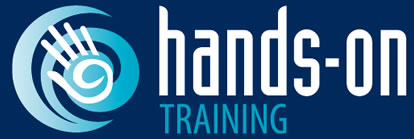Back in March of 2013 I met an extraordinary man. A very straightforward and modest man – but one with great vision and determination. His name is Keith Hunt.
I’d heard about him, initially, as he’d just received an MBE in the 2013 New Year Honours List – for services to Complementary Therapy. And then everyone was talking about him. I found he’d trained through the same organisation as me – the Massage Training Institute – the gold standard in quality deep tissue massage. If you have ever received a massage from someone MTI trained you will instantly know the difference…
I asked Keith to give a talk to fellow MTI practitioners about massage for the elderly and those living with dementia, to complement a session about giving massage to people with physical disabilities. He instantly said yes, and added that he also wanted to cover “massage in a hospital environment’.
This was fascinating stuff, and something I knew nothing about. Over a 20 year period Keith had gently developed a working relationship with The Royal Free Hospital in Hampstead, North London – raising awareness of the value of massage as a complementary therapy, working effectively alongside surgical and medical procedures.
As a consequence, the hospital now boasts its own Complementary Therapy department – the only one in the UK, I believe. Keith, supported by a handful of part-time massage therapists, are all actually paid – funded by The Royal Free Charity; the rest of the team is made up of volunteers – now including myself.
As an aside, I realised some years ago whilst doing support work at another health agency that the NHS would collapse without the thousands of volunteers working within its environs. Organisations such as Child line, Age UK, Scope, Diabetes UK, Action aid, The Samaritans and many, many more are almost entirely staffed by volunteers.
The Royal Free is a 12 floor, 900 bed hospital, specialising in liver transplants and the treatment of scleroderma – an auto-immune wasting disease. When Keith – well known for his cheery disposition and bright pink T-shirts – first started giving massage, treatments were offered only on the haematology wards. Now the service is extended to the whole hospital – for both in-patients and out-patients – though not necessarily all departments take it up. It is down to the awareness and involvement of the nursing & physiotherapy staff, on each ward, to refer a patient…
My time since I joined the team has been spent mainly on the wards specific to Oncology (Cancer), Liver transplants, Scleroderma , Care of the Elderly (COE) and PITU (Planned Investigative Treatment Unit) – where infusions, such as chemotherapy, are administered. But we give massage to anyone, from little children to those holding their Queens telegram. And it is available for staff too, though the patients come first…
In the last 12 months, Keith and his team have given over 21,000 free massage treatments!!!
 The massage itself is not standard as you would offer a more active, physically healthier person. It is essentially very gentle, very slow and rhythmical – providing relief and comfort rather than ironing out knots. The words “deep tissue” simply don’t come into it. Favoured massages are lower legs and feet – a wonderful antidote for those lying in bed for days on end and taking variable cocktails of medication, often resulting in significantly reduced mobility and excessive water retention; which can lead to oedema. Anything deeper could be counter-productive to each patient’s healing process.
The massage itself is not standard as you would offer a more active, physically healthier person. It is essentially very gentle, very slow and rhythmical – providing relief and comfort rather than ironing out knots. The words “deep tissue” simply don’t come into it. Favoured massages are lower legs and feet – a wonderful antidote for those lying in bed for days on end and taking variable cocktails of medication, often resulting in significantly reduced mobility and excessive water retention; which can lead to oedema. Anything deeper could be counter-productive to each patient’s healing process.
As a therapist working predominantly with fitter and more mobile clients, I have found my time at The Royal Free humbling. It is a pleasure to give massage to such an array of people, and to be the occasional bright moment in the day for so many of those confined to their beds.
In conclusion, ideally every hospital – and hospice – should have a Complementary Therapy Department. It makes such a difference – just ask those who receive the massages. But it needs the commitment of someone like Keith Hunt to set up and run – and it needs money. This should not be something that exists on the goodwill of volunteers…
To find out how to learn massage for hospitals and hospices, go to: Massage in Hospitals and Hospices




Follow us on